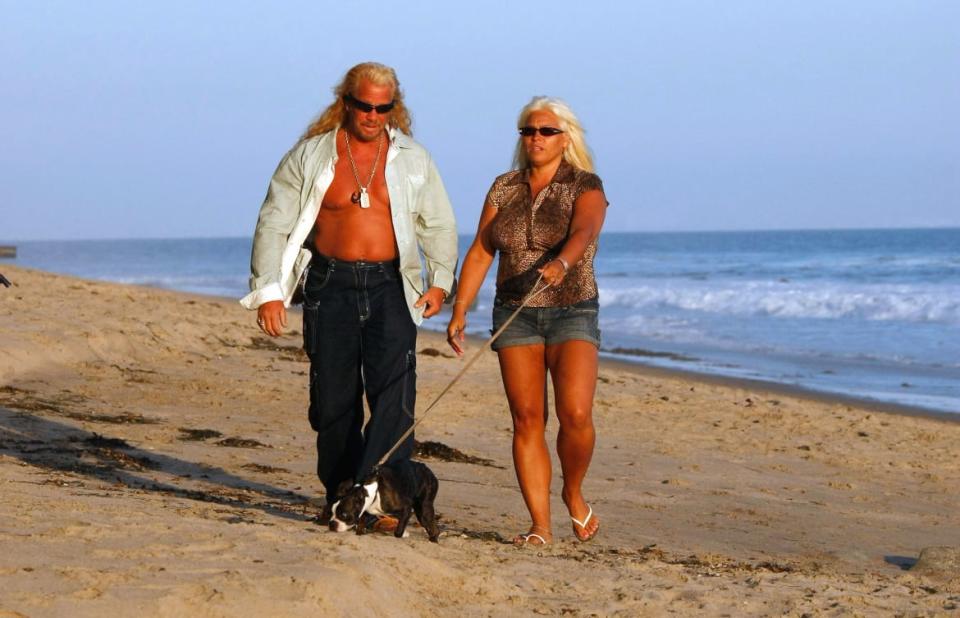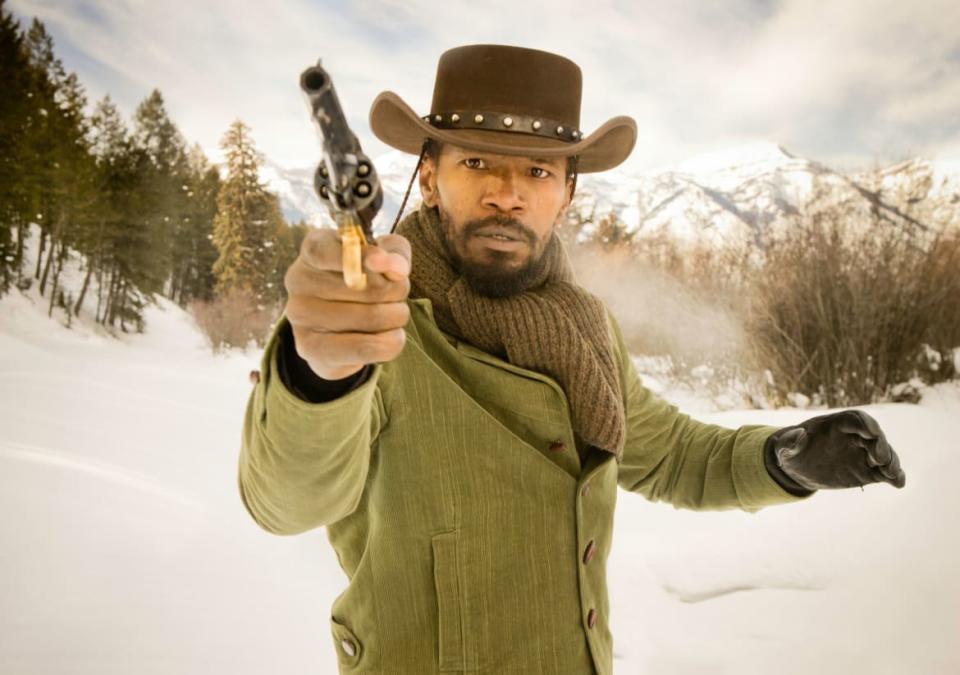What Hollywood Gets Wrong About the Bounty Hunting Business

- Oops!Something went wrong.Please try again later.
- Oops!Something went wrong.Please try again later.
- Oops!Something went wrong.Please try again later.
- Oops!Something went wrong.Please try again later.
From a brash Clint Eastwood in the classic spaghetti Western For A Few Dollars More to a conscientious Robert De Niro in Midnight Run, pop culture depicts the bounty hunter as a kickass, gun-toting white man. Sometimes it’s portrayed by former convicts like reality TV’s Dog the Bounty Hunter and Giovanni Ribisi’s con man who invades a family in the bail bond business in the Amazon’s series Sneaky Pete. Nevertheless, it’s usually a white guy. How realistic is this picture? Let’s examine it with the help of a real bounty hunter.
First, the job title. While “bounty hunter” is universally understood since the days of the Wild West, professionals dislike it. “We never use the term bounty hunter because it is not the legal name we can use in Ohio,” said Dana Acy, bail bonds agent and owner of an eponymous bail bonds agency in Cleveland.
Acy prefers “fugitive recovery agent.” Alternative job titles include bail enforcement agent, fugitive apprehension agent, and bail enforcer, which is also the title of Bob Burton’s seminal book that the U.S. Department of Justice uses as a training manual.
The job of a recovery agent is straightforward. It’s to find, arrest, and deliver to jail a person who failed to appear in court. People who can afford to post bail—a sum of money set by the court—can do so to avoid going to jail while waiting for their court dates. Bail is a constitutional right provided by the Eighth Amendment.
Those who can’t afford bail usually go to a bail bonds agency, which provides the cash on their behalf for a fee of 10 percent to 13 percent of the bail amount regardless of the outcome of the case. In effect, the agency vouches for the person. If that person fails to show up in court, the agency will lose the money it fronted. That’s when a recovery agent enters the scene to find the fugitive, also known as a skip or bail jumper.
MAGA’s New Shock Jock Is a Bounty Hunter With a Troubled Past
Granted that bounty hunting is not an easy job, does it really require an aspirant to be a gun-toting kickass? It makes sense for Eastwood’s character to be armed to the hilt on the lawless Western frontier in For A Few Dollars More (1965). But even in the more civilized environment of the 1980s in Midnight Run (1988), De Niro carried a gun.
It turns out that yes, it behooves bounty hunters to pack heat. “A person should be armed and have protective gear on when trying to apprehend a fugitive,” explained Acy, who makes arrests herself and also hires recovery agents to help out. “When you are dealing with a fugitive, it is always considered dangerous. You never know what a person under stress is capable of.”
It’s a sound standard procedure that doesn’t seem to apply to Dog the Bounty Hunter. For all of Dog’s bravado, he was never armed throughout nine seasons of his eponymous reality show, which ran from 2004 to 2012. The long-haired Dog usually rocked a fake tan, a bullet-proof vest, a badge marked “Agent,” and a taser, but no gun. It was not out of hubris, but because his felony record prohibited him from carrying a firearm.

Duane “Dog” Chapman and Beth Smith
Dog, whose real name is Duane Chapman, was 23 when he was convicted of first-degree murder for being present when a friend buying marijuana shot a drug dealer. Dog was paroled after serving 18 months of a five-year sentence.
As for Acy, some of her recovery agents have been shot at, though not injured. It’s enough to teach her team to never underestimate a fugitive, especially repeat offenders who will do anything to avoid returning to jail.
Although Acy advises team members to be armed, she herself has not felt the necessity of carrying a gun or tactical equipment, not even handcuffs, in her two decades in the business. Instead, she spends a lot of time “profiling” the subject to get a better understanding of the situation, including how to communicate effectively with the person. She would go out of her way to call judges, attorneys, bailiffs, and others to help ensure a fugitive’s safe surrender.
Acy’s method of combining profiling with an honest conversation is quite successful. “I would tell them that I could get them back on track with the courts,” she said. Expressing her earnest desire to help can make all the difference between a skip’s acceptance or resistance. “A lot of fugitives will walk into the justice center willingly if they know someone like me is ready to help them get back on track.”
The book Bail Enforcer: The Advanced Bounty Hunter backs Acy’s policy of using guns as a last resort. Burton estimated that in 60 percent of his cases, there was no need for a gun. “This is not to say that you should not carry a firearm, just don’t develop the mentality that you can’t arrest or work without it,” he wrote.
Burton, who died in 2016, worked tirelessly to elevate the profession. He founded the National Association of Bail Enforcement Agents (NABEA) in 1986 to encourage professional training and certification and foster best practices. In 2014, it merged with the National Association of Fugitive Recovery Agents (NAFRA), which is the name the organization carries today.
The bounty hunters in films and on TV are overwhelmingly white. Likewise in fiction such as Elmore Leonard’s debut novel, The Bounty Hunters (1953), and Luke Jensen, Bounty Hunter (2012) by William W. Johnstone and J.A. Johnstone, the first book in the popular series.
Does this mean that bounty hunting is a white man’s job? Pretty much, according to Acy, a Black woman. “The bail bonds industry has been a male-dominated field my entire career. It may have more white men in this profession than any other race,” she noted.
It’s for this reason that my upcoming thriller Multo (meaning ghost in Tagalog) features a Filipino American bail enforcement agent. I want to subvert the bounty hunter trope. My novel follows Domingo the bounty hunter as he looks for the only quarry that has ever eluded him, a biracial Filipina who can disappear like a ghost. Domingo is unlike most bail enforcers; he specializes in catching criminal undocumented immigrants.

Jamie Foxx in Django Unchained
You know who else has subverted the trope? Quentin Tarantino. Two of his films, Django Unchained (2012) and The Hateful Eight (2015), feature Black bounty hunters as portrayed by Jamie Foxx and Samuel L. Jackson, respectively.
While Acy is clearly a rarity in the bail bonds field, she’s not alone. Domino Harvey, a British former model, is perhaps the most popular female bounty hunter. Her life story was immortalized by Keira Knightley in the film Domino (2005), which was released shortly before Harvey died of a drug overdose at the age of 35.
In commercial fiction, Janet Evanovich blazed the trail by creating Stephanie Plum, a white female bounty hunter. Evanovich introduced the character in One for the Money, published to huge success in 1994. Katherine Heigl played the role of the bumbling but spunky and charming heroine in the 2012 film adaptation of the book. The beloved series is scheduled to publish book number 30 later this year.
Acy thinks her industry could use more women, more people of color, and more diversity. “As a Black female, I have much to bring to the table to level the field. Many African Americans are going to jail in larger numbers than other races. I can relate to many of the families and understand the economics and need for clarity to help navigate the justice system,” she added.
Women have a distinct advantage, according to Acy. “I help to take the stress out of every situation so the client does not feel like a transaction. Females can just be naturally nurturing individuals, and it comes out even when we are working,” she said.
The empathy Acy personifies is lacking in most bounty hunter movies and books. Pop culture tends to emphasize the “bounty” part of bounty hunting. Whether it’s the young Clint Eastwood in For A Few Dollars More or the older Eastwood in the Oscar-winning Unforgiven (1992), the reward drives the hero. Likewise nearly all the bounty hunters in Sam Peckinpah’s gritty Western The Wild Bunch (1969) were in it for the money.
Sometimes protagonists take up bounty hunting for a lack of career prospects as in the case of Stephanie Plum, who lost her retail job in One for the Money. Ribisi’s character Marius pretends to be Pete, the long-estranged grandson of a couple who owns a bail bonds agency. He needs his fake family in a small Mew England town to hide from the bad guys, so he works for the family business as a bounty hunter.
In Multo, Domingo is fresh off the boat from the Philippines with his brand-new U.S. citizenship when he’s offered the job by a compatriot who owns a bail bonds agency. Like Plum and Pete, Domingo discovers a latent talent for finding fugitives.
In Django Unchained, Foxx’s character becomes a bounty hunter not for money but to find his wife. Like Plum, Pete, and Domingo, he learns the ropes on the job. Django also gets much needed help from his mentor, a German immigrant and bounty hunter portrayed by Christoph Waltz, who won the Oscar award for best supporting actor.
Regardless of motivation, fictional bounty hunters exhibit a lot of passion for the job. It’s the one thing they share with Acy, whose strong sense of responsibility drives her dedication as a professional. “What I like best about my profession is I get a chance to help people,” she said. Citing the prevailing industry estimate of about 70 million to 100 million Americans with criminal records, she sees bail enforcement as a necessary support for the judicial system. “That is a lot of people. That could be our mothers, brothers, or children that have lost their way and just hoping to get it right,” she said. “I am still in this business because I saw a way to bridge the gap to be of service by way of information and resources.”
Let’s go back to our question in the beginning: How realistic is the depiction of the bounty hunter as a kickass, gun-toting white man? It’s fair to say that the picture is partly accurate, but Acy is proof that there’s more than meets the eye with the bail enforcement profession. Acy, Burton, and even Dog prove that a bounty hunter need not use a gun or force to be effective.
Just as Acy brings an important contribution to the bail bonds industry—namely diversity, altruism, and professionalism—fictional characters like Django, Domingo, and Plum likewise enrich pop culture for their singularity in bringing life to the bounty hunter trope.
Cindy Fazzi is a Filipino American writer and former Associated Press reporter. She has worked as a journalist in the Philippines, Taiwan, and the United States. Her contemporary thriller, Multo, will be published by Agora Books, an imprint of Polis Books, on Sept. 26, 2023. Her historical novel, My MacArthur, was published by Sand Hill Review Press in 2018. Her articles have appeared in Electric Literature, Forbes, and Writer’s Digest.
Get the Daily Beast's biggest scoops and scandals delivered right to your inbox. Sign up now.
Stay informed and gain unlimited access to the Daily Beast's unmatched reporting. Subscribe now.

